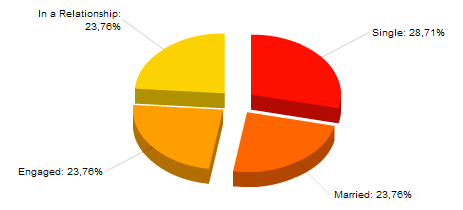Ankur Shah and Gi Fernando from the UK web development company Techlightenment had a brilliant presentation at Web 2.0 Expo in Berlin – “Disrupting the Platform: Harnessing social analytics and other musings on the Facebook API“. Techlightenment is the company behind the widely spread Bob Dylan Facebook application, so they know what they are talking about. In these days it is enough to have worked with something for a few months to be an expert, so after 4 months with the Facebook API makes the Techlightenment guys into gurus.
Facebook vs. OpenSocial
The Facebook API was compared to the OpenSocial API. There were quite a few differences, but what caught my attention was that it takes 60 lines of code in OpenSocial what it takes 2 lines in Facebook using the Facebook Markup language (FBML). In general it seems like the OpenSocial API’s are quite imature so far and that Facebook will keep ahead with it’s aggressive constant innovation for quite a while. Still, go for both Facebook and OpenSocial if you are going to do an app. If the social platform war will stay limited to just two standards we are quite well of …
You are defined by your friends
In addition to the information you explicitly have defined, like your age and if you are married or not, there is a lot of information about you that can be deducted from your list of fiends. Are most of your friends from London? If so there is a good chance that so are you. If most of your friends are working in the banking industry then there is a good chance that you are as well. This information is of course worth a lot in the hands of an advertiser that can target the ads to the right people. Now with Facebooks new Social Advertisting initiative that makes it possible for them to target ads to Facebook users even if that user is on another site than Facebook this kind of information is worth even more.
Techlightenment have developed a cool Facebook application called Socialistics that on-the-fly makes best guesses about a person based on their friends. It is a really interesting proof of concept of what can be done. Install it yourself and see what can be deducted about you based on your friends. The more friends the better guesses of course, but it is amazing what can be figured out about you. The power of these kind of statistical analyzis will explode in the near future, which is going to make both Mark Zuckerberg and the Google guys more money.
Who am I according to my friends?
Using the Socialistic app I get the following data about myself. I most likely live either in Stockholm (I did for years) or in Mexico City (not a bad guess since I do spend a lot of time thre), there is a 10% chance I have worked for Microsoft in Copenhagen (wrong) and I most likely took my university degree at Universidad Iberoamericana in Mexico City (I have studied spanish there for all of 1 hour once, but that’s it). The good stuff is that there is a 65% chance that I am a man (just that I work with IT should bring that number up to at least 90%) and that I am from Sweden (guilty as charged)


According to my wife I am a social outcast since I only have 28 friends on Facebook. If the name calling I have to take out a Facebook divorce (ie “cancel relationship”), after all it is 28% chance that I am single already.


